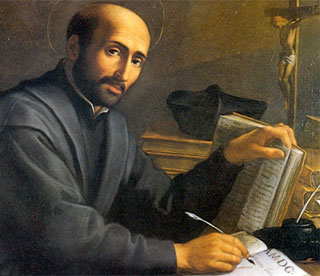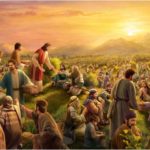Today’s missionary hero is a man whose influence on the missionary life of the Church continues around the world even today although he died in 1556. His name was Ignatius of Loyola.
Ignatius was born in 1491 in Spain. As a young man, he had dreams of becoming a great knight. However, his dreams were dashed in 1521 when he was seriously wounded when a cannonball injured both of his legs.
While recovering, he wanted to read romantic tales of chivalrous knights and their adventures. However, the place in which he found himself only had the life of Christ and the lives of the saints. Reluctantly, he read them to pass the time. God, however, touched his heart through these books. Soon, instead of desiring to be a military knight, he decided to be a knight for Christ.
As a result of the books, and a vision of Mary, Ignatius changed his life. He especially loved reading about St. Francis of Assisi. Between 1524 and 1537, Ignatius found himself studying all over Europe, and in 1537, he was ordained a priest. In 1539, he and some companions banded together and formed the Society of Jesus, popularly known as the Jesuits. Among the young men was Francis Xavier, one of the greatest Christian missionaries of all time.
Fr. Ignatius was elected as the first Superior General of the new religious order and spent his time in Rome establishing a college, orphanages, and other institutions. His greatest contribution to the mission life, however, was the foundation of the Society of Jesus which, through the centuries, has sent missionary Brothers, priests, and laypersons to all corners of the planet. Much of Jesuit mission work is via teaching in Jesuit colleges and universities. In 2020, there are, for example, 28 Jesuit colleges and universities just in the United States alone.
St. Ignatius of Loyola’s died on July 31, 1556, and his feast day is July 31. He is a patron saint of soldiers, retreats, educators, and various dioceses and geographical locations.



